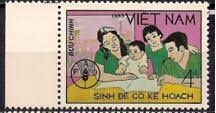Michael Fred Phelps II, born on 30 June 1985, in Baltimore, Maryland, is an American former competitive swimmer who is widely regarded as the greatest swimmer of all time and one of the greatest athletes in the history of sports. Known for his exceptional prowess in the pool, Phelps has won an unprecedented 23 Olympic gold medals, the most by any athlete in Olympic history.
Phelps began swimming at the age of seven, partly as a way to channel his energy and cope with attention deficit hyperactivity disorder (ADHD). His natural talent for the sport quickly became evident, and he joined the North Baltimore Aquatic Club, where he was coached by Bob Bowman. Under Bowman’s guidance, Phelps developed an intense training regimen and honed his technique.
At the age of 15, Phelps made his Olympic debut at the 2000 Sydney Games, becoming the youngest male swimmer to represent the United States in nearly 70 years. Although he did not win a medal, the experience set the stage for his future dominance. In 2001, Phelps became the youngest male swimmer to set a world record, breaking the mark in the 200-meter butterfly.
Phelps's breakthrough came at the 2004 Athens Olympics, where he won six gold medals and two bronze medals, tying the record for the most medals won at a single Olympics. His performance at the 2008 Beijing Olympics was even more historic, as he won eight gold medals, breaking Mark Spitz’s 1972 record of seven golds in a single Games. Phelps’s victories in Beijing included dramatic finishes and world-record performances, solidifying his status as an Olympic legend.
At the 2012 London Olympics, Phelps added four gold and two silver medals to his collection, becoming the most decorated Olympian of all time with a total of 22 medals. After briefly retiring, he returned to competition and participated in the 2016 Rio de Janeiro Olympics, where he won five gold medals and one silver, bringing his career total to 28 Olympic medals, including 23 golds.
Beyond his Olympic achievements, Phelps has also won numerous World Championships and set multiple world records. His versatility in the pool allowed him to excel in various strokes and distances, making him a formidable competitor in events ranging from the 100-meter butterfly to the 400-meter individual medley.
Phelps's impact on swimming extends beyond his medals. He has inspired countless athletes around the world and has brought unprecedented attention to the sport. His dedication to training, mental toughness, and competitive spirit have set new standards for excellence in swimming.
Since retiring from competitive swimming, Phelps has focused on his family, mental health advocacy, and philanthropy. He established the Michael Phelps Foundation, which promotes water safety, healthy living, and the pursuit of dreams. Phelps has also been open about his struggles with depression and anxiety, using his platform to raise awareness about mental health issues and encourage others to seek help.
Michael Phelps’s legacy as the most successful and decorated Olympian of all time is a testament to his extraordinary talent, relentless work ethic, and unwavering determination. He remains an iconic figure in the world of sports, inspiring future generations of athletes to aim for greatness
.jpg)


.jpg)



.webp)








.jpg)

.jpg)









